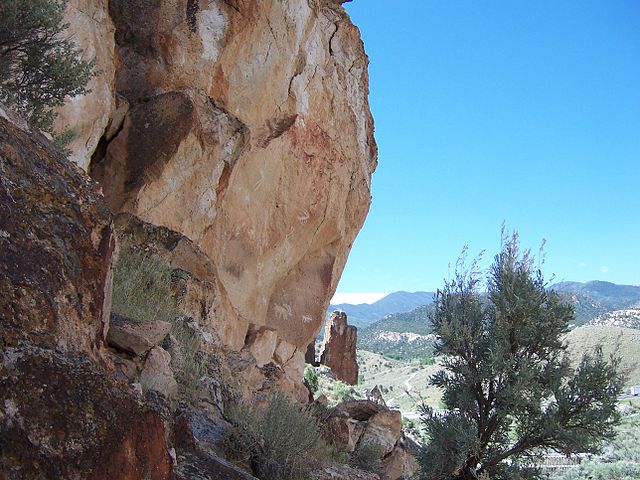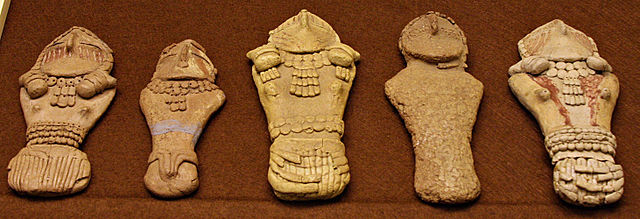Fremont Indian State Park and Museum
Fremont Indian State Park and Museum is a state park in Utah, US, which interprets archaeological remains of the Fremont culture. The park is located in Sevier County, Utah in the Clear Creek Canyon.
Rock art at Fremont Indian State Park
The Fremont culture or Fremont people is a pre-Columbian archaeological culture which received its name from the Fremont River in the U.S. state of Utah, where the culture's sites were discovered by local indigenous peoples like the Navajo and Ute. In Navajo culture, the pictographs are credited to people who lived before the flood. The Fremont River itself is named for John Charles Frémont, an American explorer. It inhabited sites in what is now Utah and parts of Nevada, Idaho, Wyoming and Colorado from AD 1 to 1301. It was adjacent to, roughly contemporaneous with, but distinctly different from the Ancestral Pueblo peoples located to their south.
Typical "Moki Hut" placement in the crevice of the cliff
A Fremont Granary, called Moki Huts locally
Fremont Indian petroglyphs in Capitol Reef National Park, southern Utah
Pilling Figurines, unfired clay Fremont figurines, on display in the College of Eastern Utah Prehistoric Museum.





